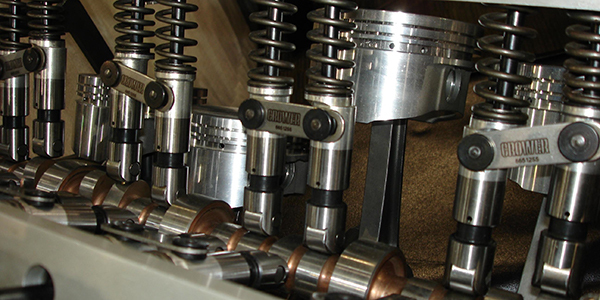Any sufficiently advanced technology is indistinguishable from magic, and for me, in a lot of ways the 2.9L (and any engine) is still operating on magic! But at least I finally understand the 4 stroke principals due to this flurry of effort haha.
On the note of education, I've been really pining for a full detailed 2.9L engine diagram, proper exploded view with all tiny parts. Like big and clear, not just small and blurry like these ones:

www.oemfordpart.com
I'd buy a book for a hundred bucks if there was one that had all of it in perfect detail. Does the legendary shop manual have that? Nobody posts pics of the interior pages when they put them up for sale.
I did just read this great article though, which gives me a much MUCH better sense of what might be the issues with my engine if it is in fact lifters depleted of oil.
Valve lifters play a key role in the valvetrain of pushrod engines. They go all the way back to the earliest days of the internal combustion engine.

www.enginebuildermag.com
It hadn't clicked for me until reading that, the fact that the lifters are not just needing oil to be lubricated, they are
operating on the very oil that gets sent to them. I knew they were hydraulic yes, but thought that meant they had their own hydraulic fluid inside. You know, like so many other self contained hydraulic mechanisms out there. But no, they take in oil, and use it as force and bleed it. So I'm starting to conjure up ways my engine could not only be noisy but partially dysfunctional... like if not enough oil is getting to/in the lifters for them to perform their hydraulic function, I believe that means that the push rods
might not have as much upward action and thus the valves may not be
fully opening for either the intake and the exhaust, depending on the lifter condition. Or something like that. Not only could there be a relative imbalance of functionality across all cylinders, one cylinder could have an imbalance in itself between its own intake and exhaust relationship.
Certainly all of that could lead to some idle issues, and maybe some cylinders misfiring at first. Maybe as the engine warms the tolerances are just changing enough to function a bit better. And it got me thinking to what might be happening on hot starts for me.. I already did the injectors, and have basically done everything else for fuel. So maybe my temporary misfires on hot starts have nothing to do with an injector leaking fuel, but rather they have to do with poor valve performance. Maybe some lifters are functioning ok during hot start, and maybe some lifters are collapsed at hot start. But at cold start, they're all equal enough to at least start up more symmetrically.
1- If the cause of lack of oil in lifters is the cam bearing issue and not faulty lifters, then the only real solution is a full rebuild due to bearing access. Or i could get lucky with a HV pump.
2- If the cam bearing situation in my 2.9 is not totally bad, and the lifters are ok, maybe the pump is weak, and so that new pump is the solution for the next XXXXX number of miles until cam bearings are fully bad.
3- If some lifters are bad though, and oil flow is actually decent in the engine, I wouldn't be daunted by pulling the heads to replace the lifters. I already have replaced the passenger side exhaust manifold so that's fresh, and I am planning on pulling the drivers side manifold soon anyways, to put on a new Y-pipe since mine has a very small leak near cats. So i'll be pretty primed for pulling the heads and doing a full set of parts evaluation and replacements. Maybe that could solve my issues.
But I suppose there's still a possibility that the lifter pre-load adjustment will help or solve something. It doesn't seem to me like the sound of ticking would change much, but it does seem like valve performance could improve and thus cylinder functionality could improve. That's the main reason this thread was started, because i'm getting weirdly bad cylinder performance sometimes. But I don't fully understand the lifter/rod mechanics yet so this is all just a fart in the wind.
I'm also now wondering about oil viscosity, and whether or not the 15W-40 Rotella is helping lifters or making it more difficult for them to function, in whatever state they're in. Also wondering about Lucas High Mileage stuff, which i haven't tried yet. Help or hurt. Maybe in combo with the lower Motorcraft 5W-30 spec it could help.
Anyways, will do the adjustments today and report back on the results...















